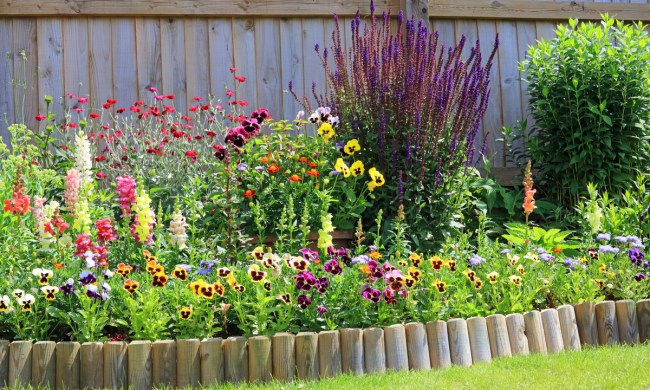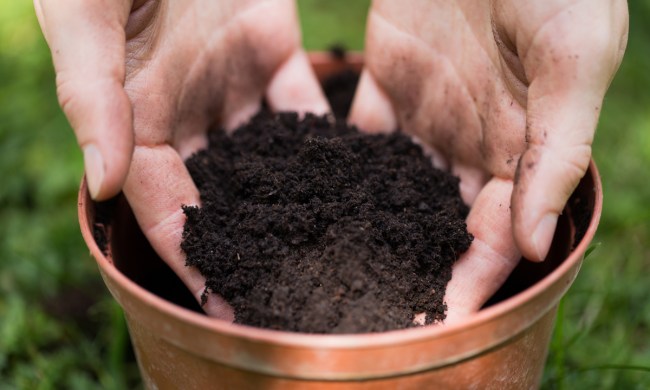The appeal of gardening for some people is the general calm and relaxation that occurs when caring for and enjoying a space you’ve worked hard to create. Zen gardens have a similar effect, but they’re explicitly designed to create a space of zen. All the elements of a zen garden work together to invite you in and promote peace as you sit and enjoy the view.
It can be easy to add these elements to your already existing garden design. However, if you aren’t sure where to begin, we’re here to help. Whether you want to add zen garden elements to your existing garden or are planning an entirely new garden, this guide will explain everything you need to know about how to make a zen garden in your backyard.
What is a zen garden?

A zen garden is minimalist, dry landscaping with elements like rock, gravel, sand, and wood. They don’t usually feature plants or water, meaning they have year-round appeal since these elements aren’t affected by weather changes. This type of gardening originated in Japan and was developed by the monks. Many of us have seen the smaller versions of zen gardens, which can fit on a desk or table. These mini versions are fun to use and can also teach you just how challenging keeping up with a zen garden can be.
Important details of a zen garden

Before starting the process of installing a zen garden, first, take the time to consider the essential elements you’ll need to incorporate. Of course, not all zen gardens feature all of these, but all zen gardens do at least feature some.
Rocks
Large rocks set into a zen garden represent humans’ desire for enduring elements. They’re usually one of the first aspects installed, since they’re often the garden’s focal point.
Gravel
We all know the sand and tiny rake that comes with the tabletop versions of zen gardens; bigger versions use gravel instead of sand. The gravel is raked into symbolic patterns. As the day goes on, the changing light will transform the look of the patterns. While some gardeners might still use sand, gravel is easier to maintain and less likely to invite your feline neighbors.
Screening
Using a screen to cut off the zen garden from the rest of the world is a great way to enhance the zen experience. It can be hard to meditate or focus if you can feel the eyes of the kids next door on you. A screen can be made with fabrics or plants such as bamboo.
Statuary
Whether it’s a Buddha figurine or a Japanese lantern, adding a statue to the design can be a way to add an interesting focal point. They can bring another element of calm and focus to the space.
Pathway
Indicating where people should and should not step will save you endless hours of re-raking and maintaining your zen garden. While zen gardens are hard work, there’s no need to make it harder by not giving people an obvious place to walk.
Seating
It can be hard to enjoy and meditate in the zen garden if there’s nowhere to sit. While this doesn’t have to be a luxurious sofa, it’s best to add some form of comfortable seating for meditation.
Lighting
Like within our homes, the best way to change a space’s mood and feeling is with great lighting. For example, soft lighting around pathways or statues can promote peace and tranquility.
How to create a zen garden

Now that you know which elements are critical to consider, let’s go over how to make your zen garden dreams come true.
Do your research
You’ve already started this by reading this piece; however, it doesn’t stop here. Ensuring that you know what you’re doing and how you’re going to do it respectfully and effectively takes time and effort. Don’t jump in without a plan and expect things to go your way. Remember that this is a sacred tradition that should be treated as such.
Choose a spot
Selecting the location of your zen garden is another vital part of ensuring your zen garden’s success. Avoid heavy traffic areas, like next to a pool or the water hose. These spaces invite children and pets, and other household members who might accidentally interrupt your meditation.
Ensure there’s balance
There are seven guiding principles for creating a zen garden: Austerity, Simplicity, Naturalness, Asymmetry, Mystery or Subtlety, Unconventional, and Stillness. The design you come up with should incorporate most, if not all, of these principles.
Plan out design
Using pen and paper or more modern methods, plan out your garden before you start changing things up. Measure out the space you’ve chosen and try out a few ideas. This way, when you’re ready to purchase items and get to work, you know exactly what you’re going to do. This will save you time and money.
Make it yours
While elements such as water and plants aren’t traditionally used in zen gardens, feel free to use them in your design if these bring you zen and joy. If statues aren’t your vibe, but the rock formations speak to you, go for those instead. Choose elements that suit your personal preferences while still staying true to the zen principles.
Keep it simple
Zen gardens shouldn’t be cluttered. While we understand it can be exciting to add all these elements to your space, remember that simplicity is key to the perfect zen garden. Don’t go too over the top and try to keep it as simple as possible.
What plants should you include in a zen garden?

Unlike other common types of gardens, plants are not the focal point of zen gardens. However, they are still sometimes used as accents and borders. If you want to include plants in your zen garden without disrupting it, here are a few guidelines you can use. Keep the plants simple and neutral. Large, bright flowers are pretty, but they can also be distracting. Opt for green foliage plants or small, unobtrusive flowers. Moss, short ornamental grasses, and ferns are nice accent plants, while borders are commonly shrubs or small trees.
Choose low-maintenance plants. The purpose of a zen garden is to meditate, and it’s difficult to meditate when you’re stressed about whether the plants need pruning! Finally, consider a few Japanese plants to match your Japanese zen garden. Japanese maples and cherry blossoms make good accents, but there are also traditional Japanese planting styles, such as bonsai gardens and kokedama.
Zen gardens are centuries old and can be a great addition to your home garden. Remember the guiding principles and vital elements and follow your own preferences, and you’ll end up with a space that will bring you and your family peace.



